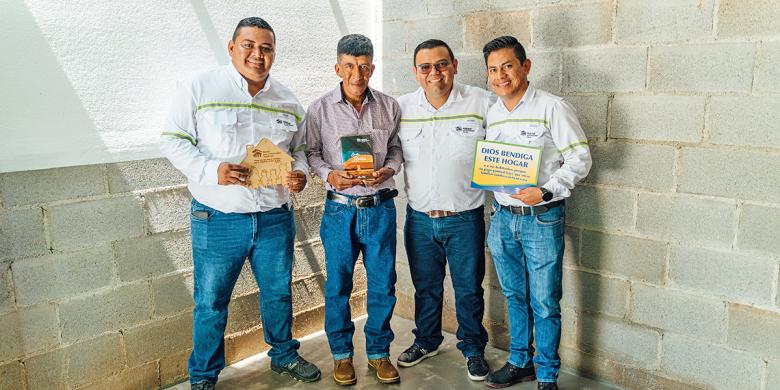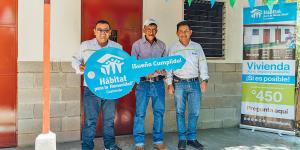Don Juanito and the happiness of a hybrid house
Juan José, 51, better known as don Juanito lives in San Agustín Acasaguastlán in Guatemala. 20 years ago, he met Habitat for Humanity Guatemala through a project for which he was hired to clean the fields where 32 houses were to be built.
20 years later, life reconnected him with Habitat, but this time it was not for a job, instead it was to request an improvement for his home, where he had been living in precarious conditions and without access to basic services.
Don Juanito subsists mainly on agricultural work, and construction work sporadically; with his income, he was unable to save enough to be able to make the necessary investment to make the improvements that his house needed.
When he came across Habitat again, he found in the Support Extreme Poverty Program the solution to improve his house. Initially, the improvements focused on replacing the dirt floor with concrete one; however, the walls of the house were in danger of falling, as they were supported by wood fragments. Habitat decided to provide a hybrid house for don Juanito, so he can finally have a safe place to call home.
Habitat Guatemala’s hybrid homes are characterized by being built with concrete and other materials, hence their name. These high-quality, low-cost homes are available through a social financing scheme with affordable monthly payments, starting at approximately US$57. Their structure incorporates concrete with 25 kg blocks, fiber cement or Durock panels, metal side walls, aluzinc sheets, metal doors, and concrete floors. Each house consists of two bedrooms, a corridor, a bathroom, and also includes a water purifying filter and a wood-saving stove.
These houses seek to improve the quality of life of Guatemalan families who do not have safe housing with the minimum conditions of habitability, and who also do not have the economic capacity to access a traditional financing plan for housing.
“My house was made of palm thatch. There was a roof that had an adobe and a bahareque roof. But everything was ruined, and I couldn’t find a way to repair it. But at the end of the day, Habitat came to help me... Today, with your help, with God’s help, I have a house. Some families cannot have a house like the one I have. Yes, thanks to you, I have no way to pay you, this help that you came to give me is very good and I hope in God that we will continue to move forward. ”, says Don Juanito gratefully.


